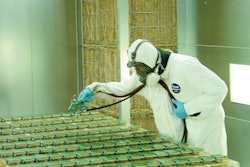“Well,” goes the punch line to an old joke, “it seemed like a good idea at the time.”
Many manufacturers who decided to offshore their production aren’t laughing. While offshore labor prices, especially in China, initially were very alluring, times have changed. Those once attractive Chinese wage rates have risen. Then there are total landed costs, including raw material and component costs, manufacturing costs, transportation and logistics, inventory carrying costs and taxes and duties to figure into the equation.
Then there are the long lead times, the inventory carrying costs and missed opportunities to respond to shifting market trends. Then there is, perhaps, the increased risk caused by a lack of visibility into the supply chain. What about natural disasters like the Japanese Tsunami, the Thailand floods or the Iceland volcano? What about political instability? And if that’s not enough, there’s the very real risk of intellectual property theft.
A 2012 study by the Boston Consulting Group (BCG) indicated that more than a third of U.S.-based manufacturing executives at companies with sales greater than $1 billion are planning to bring production back to the United States from China, or are considering it. Of 106 companies across a wide range of industries, 37 percent said they planned to (or were considering) reshoring. At companies with $10 billion or more in revenues, 48 percent indicated they were at least seriously thinking about returning to the U.S.
“Not long ago, many companies regarded China as the low-cost default option for manufacturing,” said Michael Zinser, a partner at BCG who leads the firm’s manufacturing work in the Americas. “This survey shows that companies are coming to the conclusion surprisingly fast that the U.S. is becoming more competitive when the total costs of manufacturing are accounted for.”
Look at the entire picture, advises Tucker Marion, Assistant Professor in the Northeastern University College of Business School of Technological Entrepreneurship. “You need to be smarter about things. The U.S. is still the largest economy in the world by two or three times, even with China growing,” he said. “If you’re going to look at the total equation, it doesn’t make sense to ship [products] 15,000 miles in four weeks. Ten years ago, everyone was on the bandwagon to offshore. We’re smarter now.”
According to consulting firm, The Hackett Group, reshoring is expected to become more viable with each passing year. Its research found that the cost gap between the U.S. and China has shrunk by almost 50 percent over the past eight years and is expected to stand at 16 percent by the end of this year. The trend is driven by rising labor costs in China, as well as rising fuel prices globally which affects shipping costs.
Additionally, American consumers are beginning to come around to “Made in the USA.” A 2012 survey by the Alliance for American Manufacturing indicated that 78 percent of U.S. consumers view products made in America favorably, up from 56 percent two years before. A study by Perception Research Services International revealed that 76 percent of Americans are more likely to buy U.S. products and 57 percent less likely to buy Chinese products.
A sinking feeling
Acorn Consulting Group builds cost account systems. Part of their work is analyzing the cost of import vs. domestic resources. “Half the time, it’s better to do it domestically. For years, people thought it was cheaper [to outsource],” says Acorn’s Jack Haedicke. “But then you add in transportation, duties, fees, pallets, trucks to the DCs, there’s a lot going on. It’s more of an appreciation of the total supply chain.”
One of Acorn’s customers is Elkay Manufacturing. Founded in 1920, Elkay manufactures stainless steel sinks and faucets, water coolers and drinking fountains. One of Elkay’s products is an undermount sink for the fabricator market to be installed with countertops. Six years ago, the Oak Brook, Ill.-based company’s Lumberton, N.C., facility was capacity constrained. At the same time, the China facility was new and trying to stand on its own to serve the Asian market. The product was shifted to China as a subsidy for that facility.
“We did see a cost saving, but the intent was always to bring the product back to the U.S. to satisfy our ever-more demanding service-level requirements,” explains Kevin Keane, Director of Operations Finance, at Elkay. “As China continued to struggle, the product remained there, but several factors resulted in us bringing the product back.”
They included:
- a detailed cost analysis and significant reduction of changeover times in Lumberton that showed a smaller gap than originally thought (variable cost vs. variable cost, inclusive of all shipping and import costs);
- introduction of cabinetry to the China business, giving them another foothold;
- the economic downturn in the U.S., along with efficiency improvments leading to the elimination of the capacity issue in Lumberton; and
- an opportunity for further cost reduction, primarily through material utilization. “That was a real win-win because in enabled Elkay to reduce cost while preserving American labor,” Keane says.
A final reason for the return, the filing of an eventually successful trade case affecting the import of drawn stainless steel sinks from China. In essence, Chinese manufacturers were “dumping” sinks on the U.S. market at less than fair value. “A fabricator can go to a Chinese manufacturer and buy a sink for less than the steel costs,” Keane says. “The Chinese government is subsidizing it.”
No longer. On March 21, in response to anti-dumping and anti-subsidy petitions filed by Elkay in 2012, the U.S. International Trade Commission (ITC) unanimously ruled that unlawful pricing by Chinese producers caused material injury to Elkay and other domestic producers of drawn stainless steel sinks. The ruling led to five years of stiff duties. Four individual Chinese producers received rates ranging from 30.46 percent to 52.13 percent; 19 cooperating producers were hit with a 42.06 percent rate, and non-cooperating Chinese producers were slapped with a whopping 85.04 percent duty.
Transferring
Watching from his Atlanta office, Pratt Pande has seen products that his company, Proforma IdeaPress, could make, be manufactured overseas. The 30-year-old firm provides promotional products, printing services, business documents and eCommerce solutions.
“We are extremely price competitive, but the trend among companies has been to outsource to China and other regions where they could manufacture cheaply, Pande said. “China does a lot of things process-wise. You take a product to decorate kids’ garments. It’s a very broad program with 300-400 SKUs. It’s done in China [because] it’s a lot of small pieces.
“We always have a battle with our customers, overseas vs. U.S. [Even if] the price is good, there’s long lead time, 90-120 days, and if it’s wrong…That’s one thing in favor of onshoring. Design to marketplace is now.”
Things have looked up recently for Proforma. The company put out a Request for Proposal via the Ariba Discovery Network, seeking iron-on transfers. The connection paid off with $500,000 in business with a U.S. supplier. The result was a 30 percent reduction in supply costs and a lead-time reduction from 120 days to less than 30.
“Big companies like GE and Apple are bringing some manufacturing home,” said Ariba’s Tim Minahan. “But small companies now are empowered to make the right shoring decisions. There are tools, information sources, social and business networks. They can identify suppliers, get peer feedback and really look at total landed costs.”
At your service
A Hackett Group study confirms that China’s relative competitive position is eroding to the detriment of its overall economy, but very few of the low-skill Chinese manufacturing jobs will ever return to advanced economies; most will simply move to other low-cost countries.
The study found that “in industries with a high labor-cost component in total landed cost, the financial advantages of offshore manufacturing continue to be extremely compelling and sustainable. But in many others, companies must constantly reevaluate manufacturing sourcing decisions based on changes in regional market conditions.”
China will retain an edge in sheer numbers of available laborers, says Michael Janssen, Chief Research Officer at The Hackett Group. “If you said you need 10,000, 100,000 or a million workers, China can do it. We can’t do it here. They could go to full employment in a couple of weeks.”
The service industry is another likely to remain offshore, for a time. Hackett’s data gathered from 4,700 U.S. and European-based companies with annual revenue over $1 billion, indicated that by 2016, a total of 2.3 million jobs in finance, IT, procurement and HR will have moved offshore, 40 percent to India. However, offshoring levels in business services, currently at around 150,000 new jobs each year, will be leveling off or declining after 2014. “By the end of the next 8-10 years, the traditional model of lifting and shifting work out of Western economies into low-cost geographies will cease to be a major factor driving business services job losses in the U.S. and Europe,” the report says.
Hackett indicates that China’s best bet is to meet the rising demand for goods in its own domestic market. It excels in low-skill manufacturing work, making products developed elsewhere and shipped out for Western consumption. To stay competitive and maintain growth in the face of its eroding cost competitiveness, China must modernize and spur innovation in its manufacturing industries.
Resources
Harry Moser may be the No. 1evangelist for the nearshoring movement. As founder and president of the Reshoring Initiative, he has participated in the White House Insourcing Forum spoken in a White House Insourcing panel on C-SPAN, and testified on reshoring at a Congressional hearing.
Reshoring, Moser says, is an efficient way to reduce imports, increase exports and regain manufacturing jobs in the United States. It's also the fastest and most efficient way to strengthen the U.S. economy.
“For the nation, reshoring brings back desirable jobs that have been lost to decades of offshoring. Reshoring also helps manufacturers recover from offshoring's poor quality, trade secret thefts, supply chain disruptions and lengthy delivery times—all while staying cost competitive.”
On his web site, www.reshorenow.org, Moser has a free tool, The Total Cost of Ownership Estimator (TCO), that enables aggregation of all cost and risk factors into one cost for simpler, more objective decision making. He says it goes further than total landed costs.
“Most companies make sourcing decisions based on price alone, resulting in a 20 to 30 percent miscalculation of actual offshoring costs,” he says. “With the TCO, users account for all relevant factors, including overhead, balance sheet, corporate strategy and other external and internal business costs.”
It provides a total cost for each source (enabling direct comparisons); incorporates 29 cost facts; automatically calculates freight rates for 17 countries; automatically calculates duty rates for parts or tools; and provides a five-year forecast based on the user’s own forecasts.
Here are some other sources for information on resourcing:
- National Institute of Standards and Technology’s Manufacturing Extension Partnership: http://nist.gov/mep/reshoring.cfm
- The Advanced Manufacturing Portal: http://www.manufacturing.gov/whatis_am.html
- The Alliance for American Manufacturing: www.americanmanufacturing.org
- The MPI Group: www.mpi-group.com



















